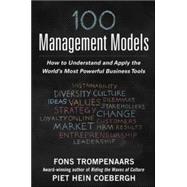The one-stop resource to 100+ powerful management methods
100+ Management Models offers a quick overview of the key features and potential applications of each of the most important models in nine different categories: sustainability, innovation, strategy, diversity, customers, human resources, benchmarking, leadership, and implementation. Each section concludes with a summary of the key dilemmas that tend to emerge from the particular function, along with analysis of potential solutions.
Fons Trompenaars is a world expert on international management and the author of the global bestseller Riding the Waves of Culture. He is a recipient of the International Professional Practice Area Research Award by the American Society for Training and Development (ASTD).
Piet Hein Coebergh is an expert in formulating and communicating corporate strategy. He is a lecturer at the University of Applied Sciences, Leiden, and managing consultant at Coebergh Communications & PR.








